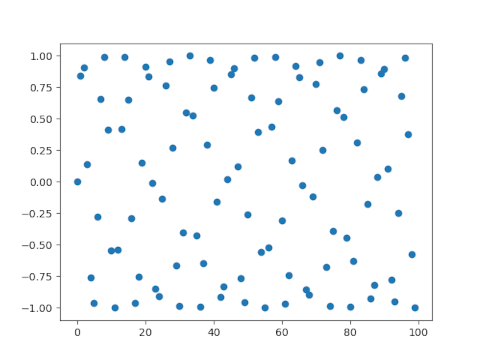Sine of integers
The sine function has period 2, an irrational number. and so if we take the sines of the integers, we're going to get a somewhat random sequence. (I'm assuming, as always that we're working in radians. The sines of integer numbers of degrees are much less interesting.)
Here's a plot of the sines of 0, 1, 2, ..., 99.

The points are not literally random, but they're what Marsaglia would call higgledy-piggledy [1].
Since the points are higgledy-piggledy, it doesn't seem possible that we could find a lower bound on |sin(n)|, but there is one. For all positive integers n,
|sin(n)| > 2-n.
This result may be due to Christopher Stuart, but in any case he proved [2] a stronger version of this theorem, showing that the 2 on the right hand side can be replaced with any number
> (sin(3))-1/3 = 1.9207....
Related posts[1] If the numbers are not random, they are at least higgledy-piggledy." - RNG researcher George Marsaglia
[2] Christopher Stuart. An Inequality Involving sin(n). The American Mathematical Monthly , Feb 2018, Vol. 125, No. 2, pp. 173-174
The post Sine of integers first appeared on John D. Cook.